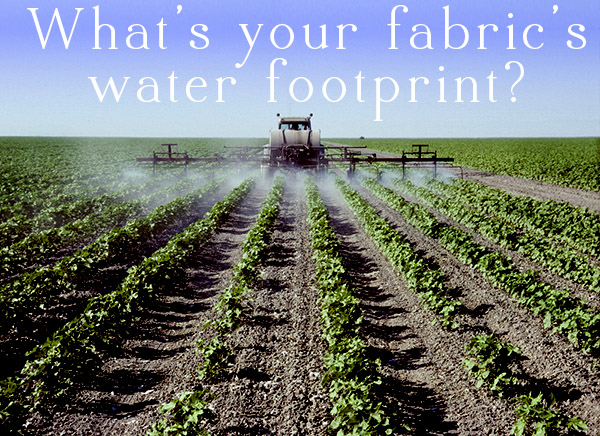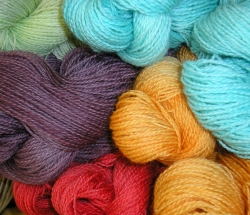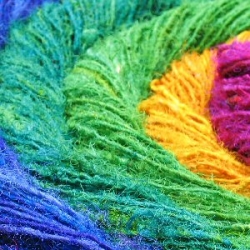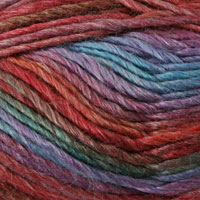Cotton is a thirsty and chemical-intensive crop. Here’s how to choose fabric for your next project that reduce your fabric water footprint.

Did you know that it takes over 2,400 gallons (9,000 liters) to produce a single pound of cotton? That’s about enough cotton to make a pair of jeans and a t-shirt. And that’s just the water used to grow the crops. This figure doesn’t take into account the water polluted by the pesticides used to grow conventional cotton, which can be very hard to measure.
Organic cotton does use fewer pesticides, but the sad truth is that organic cotton makes up just a tiny portion of the overall cotton market. Right now, organic cotton only accounts for around 1% of the cotton grown worldwide. That’s why it can be hard to find organic options at conventional fabric stores.
Related: GOTS: The Key to Truly Sustainable Organic Cotton
Lower Water Footprint Fabrics
So, which fabrics do have a lower water footprint? They’re the same fabrics we’ve been talking about for years here at Crafting a Green World. When it comes to a lower water footprint, your best choices for new fabric are still organic cotton, organic hemp, soy, and bamboo. Organic cotton actually takes more water to grow than conventional cotton, but when you account for water pollution from pesticides, it’s definitely the more water smart fabric.
Of course, the lowest footprint fabric available is reclaimed. If you really want to lower your fabric water footprint, hit the thrift store, yard sales, and estate sales for vintage yardage or linens to beef up your sewing stash.
Why Fabric Dye Matters
The other issue to consider when it comes to your fabric water footprint is dyes. Fabric dye is a major water pollutor. In fact, China’s Pearl River Delta is so polluted from fabric dye that it’s sometimes called “The World’s Factory Floor.”
This is another place where vintage fabrics have the advantage. Any impacts from their dye process happened a long time ago. All that we can do now is use up that fabric, so it won’t go to waste.
For newer fabrics, look for textiles dyed with vegetable-based dyes or certified with the Oeko-Tex Standard 1000, which looks at the company’s production processes and its impacts on the environment and human health, including water pollution.
If you want to make an even bigger leap, you can dye your own fabrics using plant-based dyes. You can purchase vegetable-based dye powders or make your own plant-based fabric dye from scratch.
What do you do to reduce your fabric water footprint or the water footprint of your crafty stash in general? I’d love to hear more tips and ideas in the comments!
Image Credit: Cotton field image via Shutterstock.









